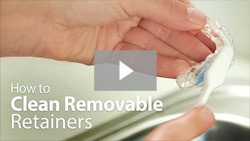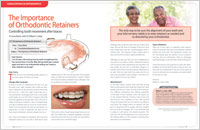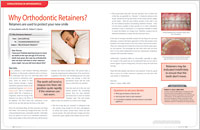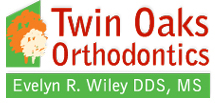Retention

Retention
When we remove your braces, we will begin the retention stage of your treatment. The retention phase is important and Dr.Wiley will instruct you on your specific retention protocol. Your final orthodontic results depends on your retainers, so be sure to follow through with the hard work you've put in so far. Remember to remove your retainer before brushing, and brush your retainer before placing it back in your mouth.
Types of Retainers:
- Clear Essix Retainers - A removable clear plastic tray that fits over your teeth like bleaching trays and Invisalign would.
- Traditional Hawley Retainers - A removable appliance made of acrylic and a wire that sits on the front side of your teeth
- Bonded Retainer - A thin fixed wire that is temporarily bonded to the lingual (tongue) side of the anterior teeth.
How to Properly Care for your Retainer
All retainers should be worn as often as Dr. Wiley instructs you to do so. Keep in mind your teeth have been in active treatment for months or maybe even years so in the beginning it is crucial to wear your retainer at least 20 hours out of each day.
Your retainer is an important part of completing your orthodontic work, so take care of it and it will take care of you. Regardless of whether it's made of acrylic and wire or thermoplastic, the process for cleaning your device should be pretty much the same.
When it is not in your mouth, keep your retainer in its case. Never, for example, wrap your retainer in a napkin while you're eating and place it on a dining table, or else it will soon enough end up in the trash can. Bacteria and plaque also pose a significant threat to the life of your retainer. Bacteria can build up on it, just like they do on your teeth, making the apparatus less than hygienic and affecting the fit. For these reasons, regular cleaning is vital to retainer care.
Long before bacteria and plaque build up to the point of affecting the fit, they'll cause your retainer to develop a bad odor. The best way to prevent this is to brush your retainer whenever you brush your teeth. If you don't regularly use a soft toothbrush, purchase an extra toothbrush with soft bristles to use when cleaning your retainer, so as not to scratch or damage it. Brush the device gently, and then rise it off with cold or room temperature water, never hot water.
You can use toothpaste when brushing the retainer, but use a type that's considered gentle - a harsh toothpaste may damage the appliance. Look, for example, for a toothpaste that's formulated for people who are prone to canker sores; these gentle toothpastes should be free of sodium lauryl sulfate and other strong cleansing agents that could damage the retainer [source: Bergh].
In addition to brushing your retainer, you will need to disinfect it by soaking it in a denture cleanse or a cleanser made specifically for retainers (your orthodontist can recommend the best option for you). These may contain peracetic acid or other antifungal/antibacterial agents, and you'll probably need to mix them with warm - but never hot- water.
Thoroughly rinse the retainer with cold or room temperature water before placing it back in your mouth. Do this daily if possible or once a week at the very least. Don't ever put your retainer in the dishwasher, boiling water, the washing machine or in direct sunlight - the heat from these sources can damage the device. If you retainer becomes cracked, of if any wires become loose, contact our office immediately.

Related Articles

The Importance of Orthodontic Retainers Decades ago, orthodontists used to think that once teeth were moved into the "right" positions, they would stay there forever. Research over the past thirty years has shown that this is not true — there is no "right" position that can assure a permanent, unchanging result. The only way to be sure the alignment of your teeth and your bite remains stable after orthodontic treatment is to wear retainers as needed and as directed by your orthodontist or dentist... Read Article

Why Orthodontic Retainers? It is common to wear retainers following orthodontic treatment or what people commonly refer to as braces, for good reason. Teeth must be "retained" or stabilized in their new position long enough for the gum tissue, bone and ligament to reform and mature around them, which can take several months. The teeth will tend to relapse into their old position quite rapidly if the retainers are not worn... Read Article
